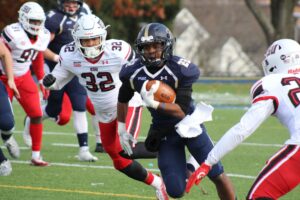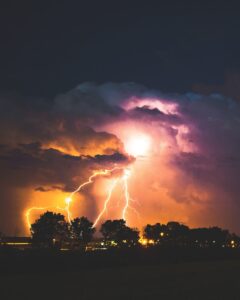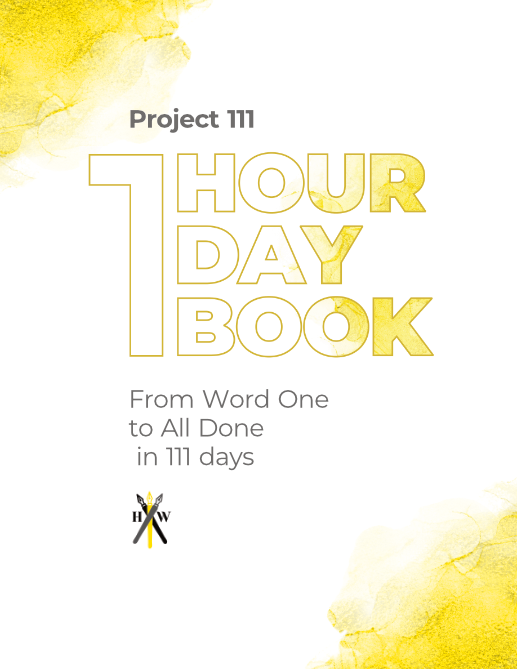Antagonist is a funny term. It can mean someone as completely, irredeemably evil as Lord Voldemort in Harry Potter, or it can be something as simple yet powerful as the weather, such as in Cast Away or Robinson Crusoe. Despite the radical difference between these antagonist examples, they both warrant and deserve the term.
How do we navigate this realm of evil-doers, natural forces, unsuspecting obstacles, and whatever else can be deemed an antagonist?
As a literary element, an antagonist is anything or anyone that stands in the way of your protagonist and their goals. It can be helpful to think of the antagonist in terms of conflict as well. If you want to learn more about conflict, check out this article.
Rather than a full-blown discussion of conflict, we’ll go over different antagonist examples and how we can include them in our stories.
Table of Contents
Types of Antagonists with Examples
1. Villains

A villain antagonist is most often what comes to mind when we hear the word antagonist. These are the characters who perform heinous acts out of a desire to make the world a more evil place.
These villains unapologetically stand in the way of the protagonist and are often a threat to more than just the main character. Darth Vader is a classic example of such an antagonist. He is a powerful enemy whose goal is to destroy the remaining Jedi, and turn Luke Skywalker evil. Luke and Darth Vader are pitted against each other in a battle of morality, strength, and support.
Vader represents a villain that threatens the safety of the protagonist and the Empire and Rebellion as a whole.
Including a villain is maybe the easiest form of creating an antagonist because of our familiarity with the idea. The basic process is to create a morally dubious character who wants to accomplish the opposite of what our protagonist wants. Peter pan, for example, wants to have fun and give the Lost Boys a good life. Captain Hook wants to make Peter Pan miserable.
The idea of a full blown villain, however, is increasingly becoming outdated. Gone are the days of a villain choosing evil for evil’s sake (unless you are writing a parody or satire). You’ll want to create a villain who feels like they are acting in their own best interest and following their own code of morals.
Let’s look at Christopher Nolan’s The Dark Knight as an example. This movie features a villain who appears to be completely evil, and according to most ideologies he is. What Nolan does, however, is show that he is acting out of his own morality. His goals, rather than to enslave all of humanity, involve introducing chaos (anarchy) to reveal the meaninglessness behind so many societal systems.
Certainly he acts from a point that could be considered insanity, but Nolan also reveals some characterization through traumatic backstory (if any of the stories about he got his scars are to be trusted). Nolan makes something of a human out of Joker which only benefits the story and invests the audience.
You may even find that you enjoy writing a villain more than a protagonist, and if that’s the case, we have the perfect article for you. A villain protagonist can lead to some awesome stories, and then you will have a more hero-type character as your antagonist (unless you make everyone evil and villainous which can work too).
To sum up the villain antagonist, remember that they should act out of a moral system that your antagonist diametrically opposes, and doing so should threaten not only your main character, but other people as well.
2. People-Obstacles

The next group of antagonists is like a softer version of the villain. We call these “people-obstacles”. Rather than acting out of spite or a will to unleash a cosmic evil on the earth, this type of antagonist simply gets in the way of your protagonist’s goals.
An example of this type of character can be found in The Secret Life of Walter Mitty. The premise of the movie is that “Life” magazine is getting acquired and shifting to a purely digital format. This leads to massive layoffs.
The main antagonist (in character form at least) is the person in charge of the merger. He’s not an evil person, and he’s just doing his job. He’s certainly unlikable (if you can even say such a thing about Adam Scott) and can exact some ruthlessness, but he doesn’t compare to the likes of Lex Luthor or Hannibal Lecter.
A way to include a people-obstacle in your story is to try and figure out what a person might want that would stop your antagonist from succeeding. You shouldn’t make it something evil like, kill the main character, but it could be something simple like win the race the main character is in or beat them at a business venture.
Think of this type of antagonist as the cousin in Pokemon who gets their first Pokemon when you do. They’re not outright evil (though you could argue that claim depending on the iteration), but they do insert themselves in your path as they try to beat the Final Four before you do.
Once you’ve found someone that can stand in the way of your protagonist, you will need to decide if you want a likable people-obstacle or an unlikable one. This will help in determining the relationship between the characters and set the trajectory of your story. (Maybe you’ll even find a sweet enemies to lovers subplot, who knows?)
3. Forces (but not “the Force”)

This type of antagonist may seem unusual because it isn’t really a character, but having a force as the antagonist is a viable option. This type of story, though, is more prone to boring your readers than any of the others so far.
Because of our familiarity with and expectation of a character playing the role of antagonist, having a force be the main stopping energy behind the protagonist can be somewhat off-putting.
An example of a force as an antagonist can be seen in Cast Away. Rather than any sort of embodiment of conflict, Tom Hanks’s character is buffeted by natural forces which keep him from his goals. The island and the sea become the antagonist he must overcome with naught but the help of his own skill, determination, and Wilson.
As previously mentioned, this type of antagonist can be the fastest way to bore the average reader (but not me; I’ll read your book).
There are a few things you can do to combat this boredom. The first thing you should do (regardless of conflict or antagonist type but especially in this scenario) is to make your characters as exciting and readable as possible. If your audience likes reading your character, they won’t be too worried about who or what the antagonist is.
Robinson Crusoe interests readers because he is an engaging character. People watch Cast Away because Tom Hanks does a great job and Wilson is the most loveable volleyball the world has ever known. If you plan to have your main antagonist be a force of some kind, make sure your main character and side characters are ready to carry the weight of the readers’ interest.
Another way to work around this potential problem is to use a natural force as a side protagonist. You can insert moments of conflict with nature throughout your story while still having a main enemy front the expected conflict. It’s a little bit of a cop out, but whatever works works. It’s your story and you can do whatever you want!
An important thing to do with nature as an antagonizing force is to make sure it plays into moments of character growth. Tom Hanks’s character is never the same after his lengthy encounter with the island and the ocean.
4. Group Entities

Rather than having a singular villain or enemy, the group entity type of antagonist presents an entire group or community that opposes the main character’s goals and desires. This is a powerful way to show how the main character acts in the face of grand opposition. Do they run and hide, do they fight, do they join, do they form a resistance?
A great example of this type of antagonist is found in Maus, which isn’t necessarily a novel, but it’s being banned again so it deserves more attention. The main character, Vladek, doesn’t face off against a single enemy; rather, his antagonist is the Nazi regime. He doesn’t ever fight or encounter Hitler, but he has many encounters with groups of Nazis.
This type of antagonist(s) does a lot to show a character’s determination and offers them ample time to characterize and develop. Vladek’s character is one of the most engaging and human I’ve ever read (likely because he’s a real person), and much of his portrayal and development comes because of this “man vs. society” conflict.
Another example of this type of conflict is found in The Monkey Wrench Gang. This story follows a group of eco-anarchists who fight the burgeoning industrialization of the American Southwest’s deserts by various companies. They fight against the prevailing society and economic sentiments.
By having this entity as the enemy, the gang comes across various individuals who are proponents of the group entity. This is a cool way to introduce characters and immediately have your main protagonists know how they will interact with them. it can also lead to an easy subversion of those expectations.
If you want to write a group entity into your story, refrain from villainizing a single person. Make sure to show why your main character(s) think or feel how they do about the organization. If they’re at odds but the reader doesn’t know why then the story could quickly fall apart.
5. No Antagonist

This may seem counterintuitive (probably because saying no antagonist is a type of antagonist makes no logical sense), but I include this option because there have been successful stories told where there isn’t really one antagonist type you can point to.
This can look like a combination of different types of antagonists, or it could be a completely character driven story in which all the characters are buds and they just come into contact with random things that hold them back. An example of this is found in Lonesome Doves.
This novel features omniscient narration where the reader bounces between all the characters’ points of view. Like a group of friends, these characters often disagree and poke fun at each other. They often share the same goal but see it in different lights, which can make how they go about that goal become a source of conflict.
They also face environmental threats in the case of storms. They face group entities as they fight rival gangs. They face forces that appear as sicknesses, and they often just get in each other’s way as people-obstacles.
This is all to say that rather than picking a single source of antagonism, you can concoct a blend of conflict from many different sources. I find that while reading the book I’m engaged because of the relationship between the characters more than anything else. The characters are all multidimensional and can be quite hilarious.
One of the easiest ways to take this approach is to have a fun cast of characters. By having entertaining characters, the reader will want to follow them regardless of where the story takes them. The novel will feel more organic as the plot is driven simply by what characters want and how other characters react.
By not having a single source antagonist, you can keep the reader excited to see what your characters will encounter next. In some sense this is the joy of role playing games like Dungeons and Dragons. You enjoy the character you’re playing or playing with and you don’t know exactly what’s going to come, but you and your friends will react to it.
I’m not saying you should base your stories on role playing experiences or that you should play RPGs, but I’m saying that if you have characters that your audience enjoys, much of the continued reading pleasure comes in the excitement of not knowing what will happen and even being okay if not much at all happens.
Conclusion

By knowing these different kinds of antagonists, you can more easily choose a type that will fit your story best. If you want to have a more traditional fantasy story, you will likely elect a villain to play the role of protagonist.
Many of these types of protagonists are more suited for their respective genres, but genre mixing can create fresh stories. Maybe you’ll see the group entity antagonist type and think, “Huh, I haven’t seen this as often in fantasy. I wonder how I could craft a story that highlights this antagonist type?”
By knowing the expected conventions of each of these antagonists, you can easily play with subversion.
One of the common through lines, though, is to have excellent characters and engaging conflict. If you have these two things, you can turn almost any story into one that your readers will love.
For more articles on improving your writing, check out our blog!
gavinwride
Gavin is a fantasy author, short story enthusiast, and nature lover. When he’s not reading, writing, or exploring the outdoors, he is likely playing games. His board game collection is probably too big for someone living in a small apartment, and he has enough yet-to-be-played video games to fill a lifetime. His favorite book is "The Name of the Wind". His favorite author is Edward Abbey. His favorite game is "Dark Souls III", and he’d be more than happy to spend the day talking about lore, bosses, and game mechanics.
Our 84-page book planner and 111 day writing course.
